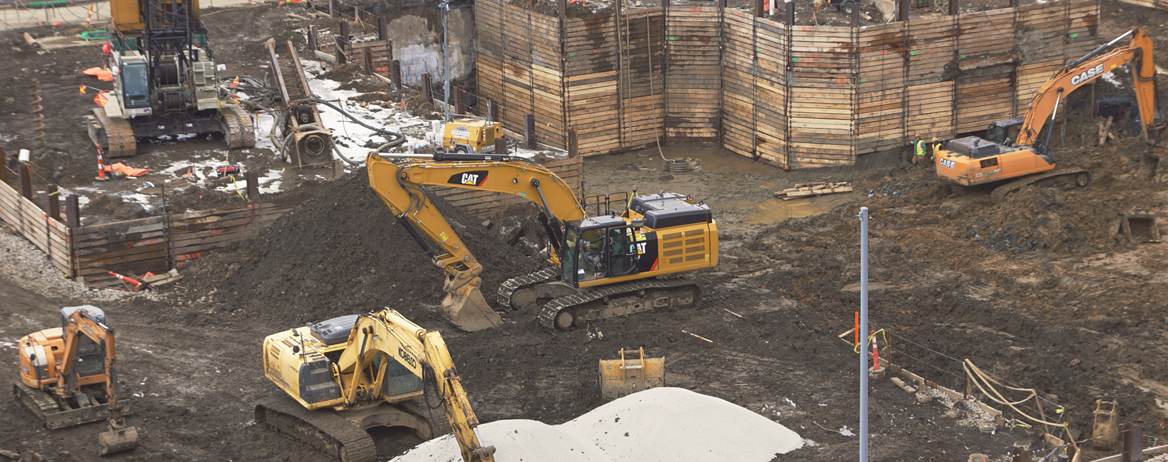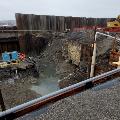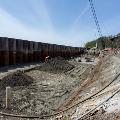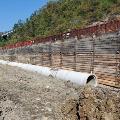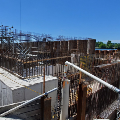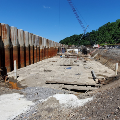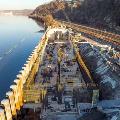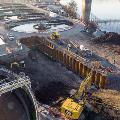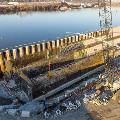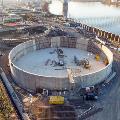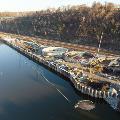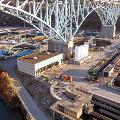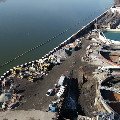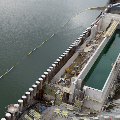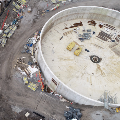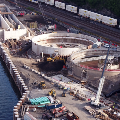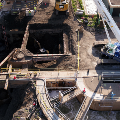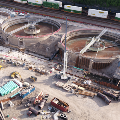Project Overview
North-End
Plant Expansion
Status
Active
Benefits
Increasing our secondary treatment capacity from 250 million gallons per day (mgd) to 295 mgd by 2025
Bid details
View bid details
Plant Expansion Projects
Learn MoreNorth-End Plant Expansion
Work at the north end of the plant includes several new additions: two circular final clarifiers, a chlorine contact tank, a chemical storage building and a new outfall that will discharge the treated flow into the Ohio River.
As part of completing a new river wall, ALCOSAN overcame the challenge of being landlocked at its north end. There is minimal space for expansion between the railroad to the east and the Ohio River to the west. The railroad required support of their property and tracks, so ALCOSAN installed a temporary wall during construction.
A tremendous amount of work went into building out the river wall. The wall’s tieback installation will be finished later in the construction phase. Overall, this is a vital part of ALCOSAN’s plant expansion because the tieback will hold the river wall in place once the site is returned to final grade in a few years.
Realization of the Clean Water Plan will bring about an increase in the amount of dirty water treated at ALCOSAN each day. This will certainly impact the scope of biological processes ALCOSAN uses to treat wastewater, such as the return activated sludge (RAS) process. RAS is a mix of microorganisms, or helpful bugs, bacteria and fungi that settle to the bottom of our 16 final clarifiers. This sludge is pumped back to aeration tanks where the bugs eat solid waste as part of the secondary treatment process. ALCOSAN is staging return activated sludge pipes for installation under the plant to prepare for the anticipated upsurge in solid waste introduced into the aeration tanks.
Benefits
ALCOSAN’s wastewater treatment plant transformation has made significant progress since digging began in the fall of 2020. This work is critical to help meet our Consent Decree requirement of increasing our secondary treatment capacity from 250 million gallons per day (mgd) to 295 mgd by 2025.
